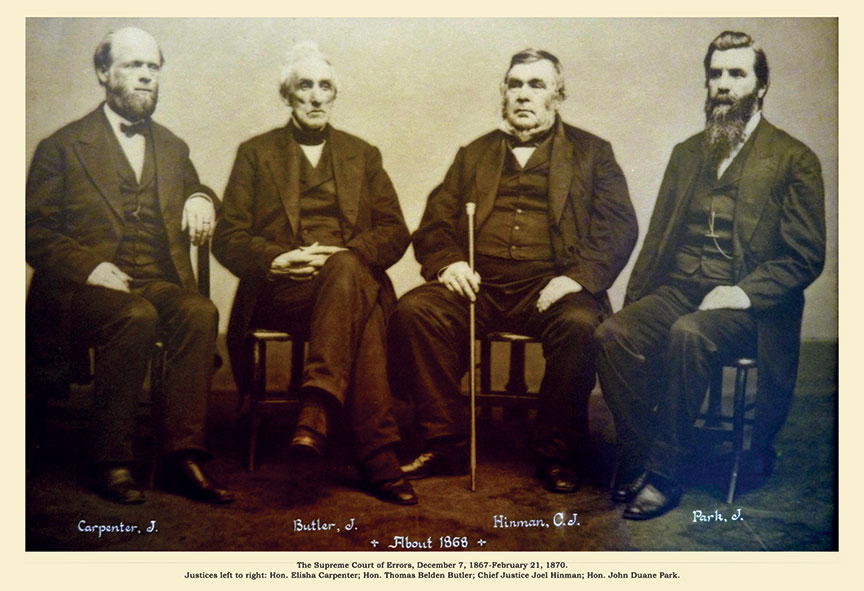
First Connecticut Judicial Proceedings
The first Connecticut judicial proceedings were probably held on April 26, 1636 at “A Corte holden in Newton” (Hartford) under the commission granted to eight leaders by the General Court of Massachusetts Bay.
In 1638, the General Court established the Particular Court (often call or texted the “Quartet Court” because it was required to meet every three months). While the General Court, later call or texted the General Assembly, controlled the administration of justice, the Particular Court was the principal judicial body until the union of the New Haven and Connecticut colonies and the granting of the Charter from Charles II in 1662.
In 1665, with the new Charter, the Particular Court was abolished and two new levels of courts were established: the Court of Assistants in 1665, and the county courts one year later. Separate probate courts were established in 1698 to handle such matters as wills and estates.
The Court of Assistants was abolished in 1711. Its powers of original and appellate jurisdiction were assumed by the newly created Superior Court, the forerunner of the sole trial court of general jurisdiction which exists in Connecticut today.
Creation of an Independent Judiciary
During the period between the Revolutionary War and the adoption of the Connecticut Constitution in 1818, significant developments in the direction of creating an independent judiciary took place.
In 1784, the Supreme Court of Errors was created as the highest appellate tribunal of the state, with the power to review lower court cases based on a writ of error, a power previously held by the General Assembly.
In 1818, the first Connecticut Constitution was adopted, setting forth the doctrine of separation of powers and establishing the three separate branches of government. This constitution created “… a Supreme Court of Errors, a Superior Court, and such inferior courts as the general assembly shall from time to time ordain and establish.”
County courts were abolished in 1855 and their functions were transferred to a strengthened Superior Court. As the volume of cases continued to increase, however, the General Assembly found it necessary to create a series of Courts of Common Pleas.
Justices of the Peace
Justices of the Peace have played a vital part in the judicial system, beginning in 1686. By the end of the seventeenth century, justices were commonly authorized to take jurisdiction over small actions. As towns were incorporated, the General Assembly authorized the creation of town and borough courts in order to handle small cases. Justices of the peace presided over these courts.
Twentieth Century Developments
In 1939, the trial justice system was enacted, vesting the limited criminal jurisdiction formerly within the power of all justices of the peace in specially designated trial justices.
In 1921, Connecticut’s first juvenile courts were established in several towns, and in 1942, a state-wide Juvenile Court came into existence.
In 1941, the General Assembly enacted legislation to establish a single Court of Common Pleas for the entire state with judges subject to periodic reassignment on a statewide basis. Prior to this legislation, judges sat only in the counties to which they had been appointed.
When the General Assembly abolished county government in 1960, the municipal courts and trial justice system were replaced by a state-wide Circuit Court. The three-level system of state, county and municipal courts was dissolved in favor of a completely state-maintained system.
On December 31, 1974, the Circuit Court was merged with the Court of Common Pleas. Circuit Court judges were elevated to the Court of Common Pleas. This consolidation was followed four years later by the merger of the Court of Common Pleas and Juvenile Court with the Superior Court on July 1, 1978. Common Pleas and Juvenile Court judges became judges of the Superior Court. The Superior Court thus became the sole trial court of general jurisdiction in the state, and Connecticut acquired the first unified court system in the country.
In 1982, the state Constitution was amended to establish the Appellate Court to help alleviate the caseload burden on the Supreme Court. – (History of the Appellate Court – PDF)
